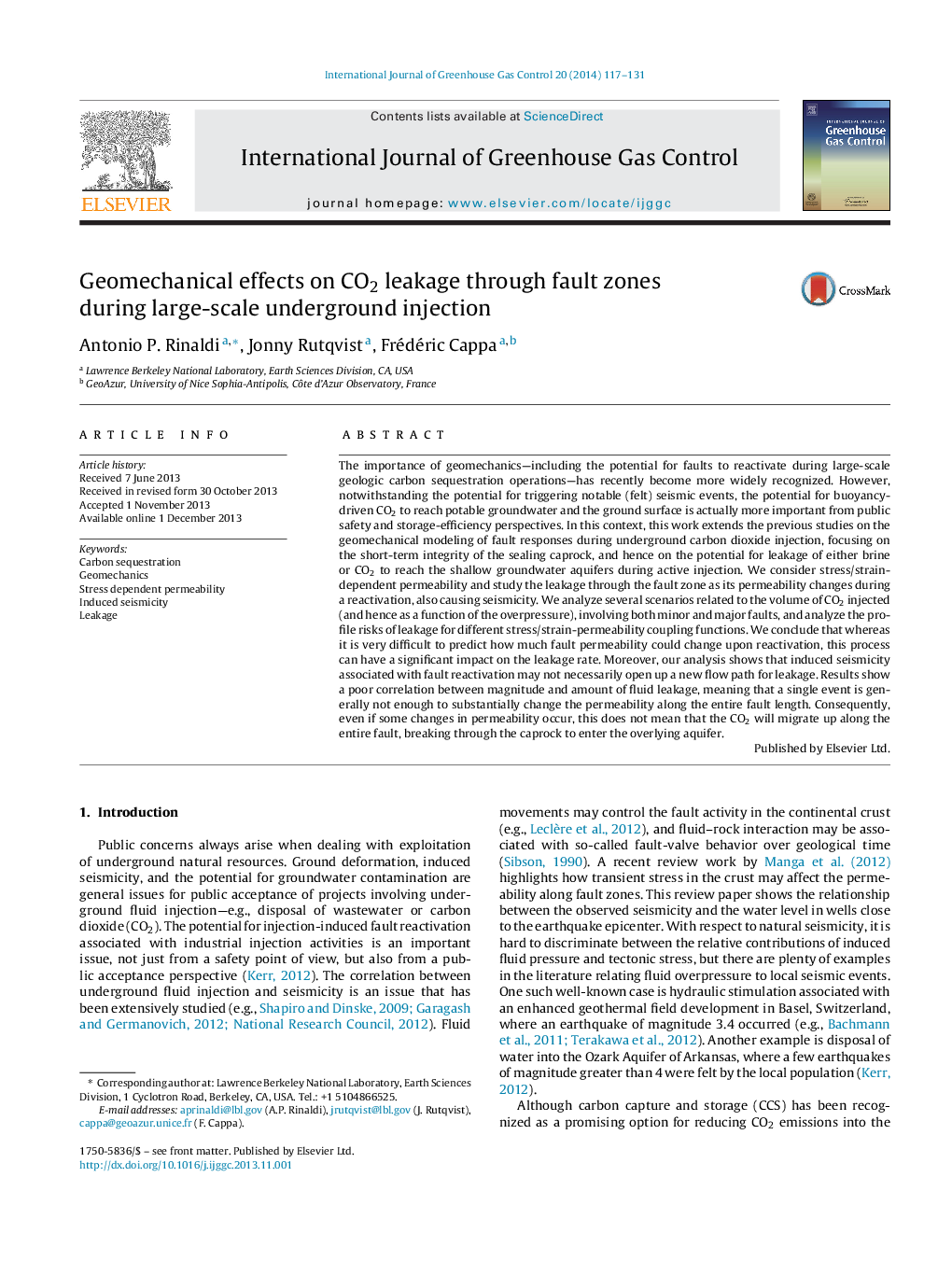| کد مقاله | کد نشریه | سال انتشار | مقاله انگلیسی | نسخه تمام متن |
|---|---|---|---|---|
| 1743081 | 1522001 | 2014 | 15 صفحه PDF | دانلود رایگان |

• Effects on CO2 leakage and induced seismicity and their relation in two different scenarios.
• Permeability enhancement in the first years of injection can have a significant impact on leakage rate.
• Induced seismic events do not always enhance CO2 leakage.
The importance of geomechanics—including the potential for faults to reactivate during large-scale geologic carbon sequestration operations—has recently become more widely recognized. However, notwithstanding the potential for triggering notable (felt) seismic events, the potential for buoyancy-driven CO2 to reach potable groundwater and the ground surface is actually more important from public safety and storage-efficiency perspectives. In this context, this work extends the previous studies on the geomechanical modeling of fault responses during underground carbon dioxide injection, focusing on the short-term integrity of the sealing caprock, and hence on the potential for leakage of either brine or CO2 to reach the shallow groundwater aquifers during active injection. We consider stress/strain-dependent permeability and study the leakage through the fault zone as its permeability changes during a reactivation, also causing seismicity. We analyze several scenarios related to the volume of CO2 injected (and hence as a function of the overpressure), involving both minor and major faults, and analyze the profile risks of leakage for different stress/strain-permeability coupling functions. We conclude that whereas it is very difficult to predict how much fault permeability could change upon reactivation, this process can have a significant impact on the leakage rate. Moreover, our analysis shows that induced seismicity associated with fault reactivation may not necessarily open up a new flow path for leakage. Results show a poor correlation between magnitude and amount of fluid leakage, meaning that a single event is generally not enough to substantially change the permeability along the entire fault length. Consequently, even if some changes in permeability occur, this does not mean that the CO2 will migrate up along the entire fault, breaking through the caprock to enter the overlying aquifer.
Journal: International Journal of Greenhouse Gas Control - Volume 20, January 2014, Pages 117–131